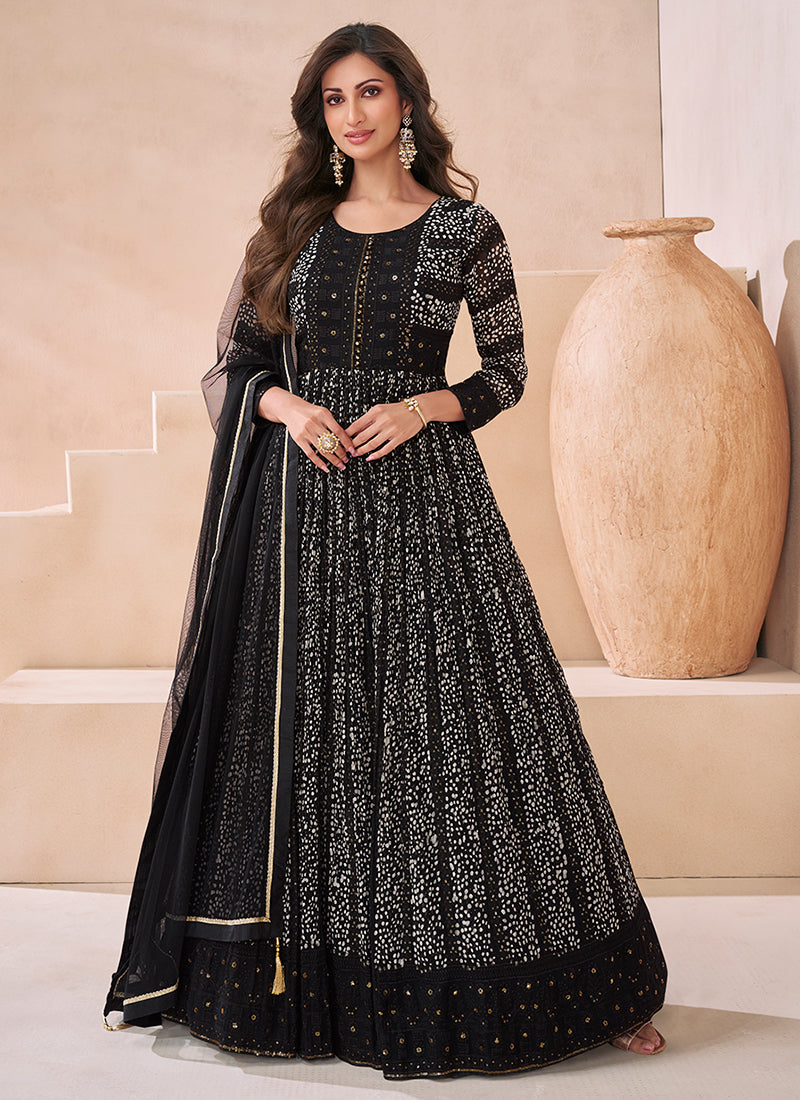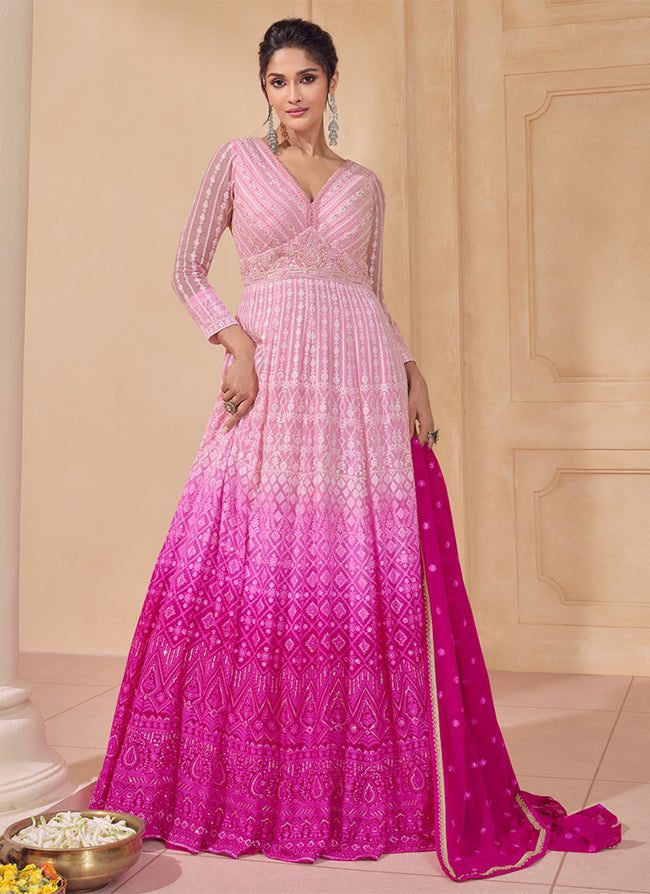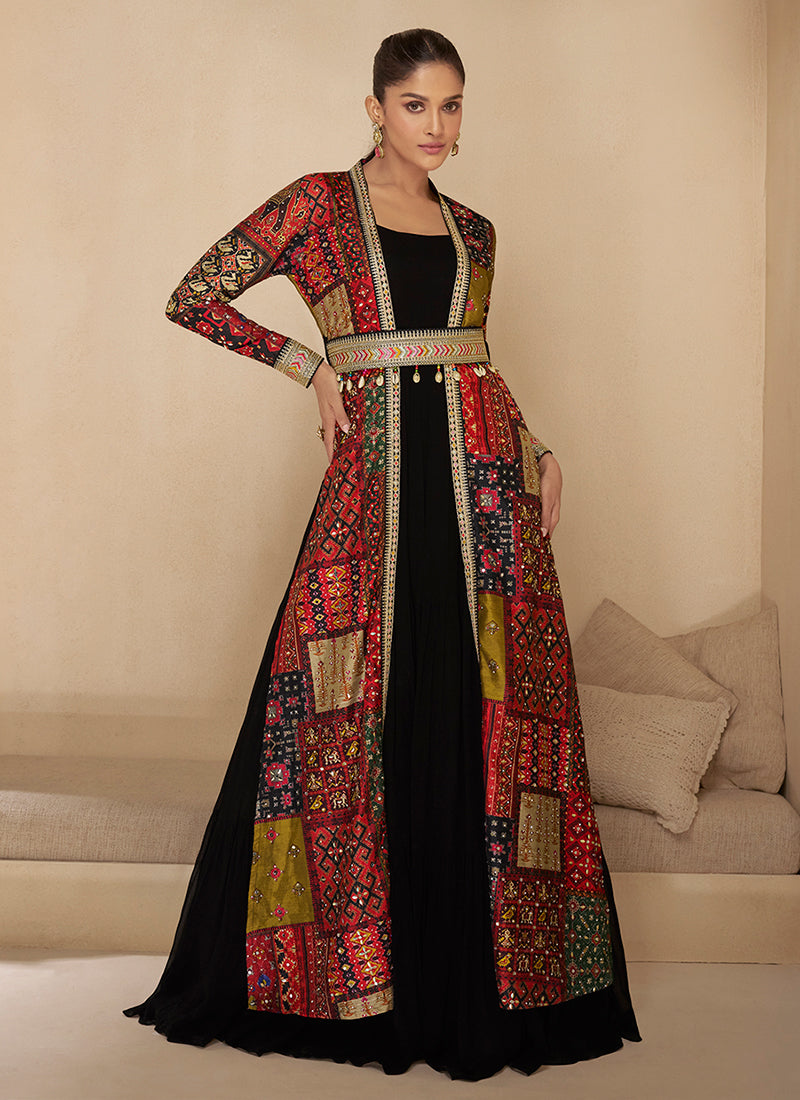Anarkali suits are celebrated for their timeless elegance and enchanting charm, making them a popular choice for various occasions ranging from weddings to festive gatherings. Named after the legendary courtesan Anarkali, these suits embody grace and sophistication, offering a perfect blend of traditional craftsmanship and modern flair. In this article, we delve into the captivating world of Anarkali suits, exploring their history, design features, styling tips, and why they continue to be a favorite in South Asian fashion.
The History of Anarkali Suits
The Anarkali suit derives its name from the historical figure Anarkali, a courtesan in the Mughal court renowned for her beauty and elegance. The design of the suit reflects the opulence of Mughal fashion, with its flowing silhouette reminiscent of the regal attire worn during that era. Over time, the Anarkali suit has evolved, adapting to changing fashion trends while preserving its classic charm.
Key Features of Anarkali Suits
1. Flared Silhouette:
- Description: The hallmark of an Anarkali suit is its flared silhouette. The kameez (top) is designed to be long and flowing, often extending to the floor or just above it, creating an A-line shape that skims over the body gracefully.
- Fit and Flair: The bodice is typically fitted, while the lower part of the kameez is full and voluminous, giving the outfit a regal and elegant appearance.
2. Embellishments and Fabrics:
- Fabrics: Anarkali suits are crafted from luxurious fabrics such as silk, chiffon, georgette, and velvet. These materials enhance the flowing nature of the suit and contribute to its grandeur.
- Embellishments: They often feature intricate embroidery, beadwork, sequins, or mirror work, adding a touch of sophistication and sparkle.
3. Necklines and Sleeves:
- Necklines: The neckline of an Anarkali suit can vary from high necks and boat necks to plunging or sweetheart necklines. This versatility allows for customization based on personal style and occasion.
- Sleeves: Sleeve designs range from sleeveless and cap sleeves to full-length and bell sleeves, offering a variety of looks.
4. Dupatta:
- Description: The dupatta is a long scarf or shawl that complements the Anarkali suit. It can be draped over the shoulders, around the neck, or used as a veil.
- Design: Dupattas often feature matching or contrasting embellishments that enhance the overall ensemble.
Styling Tips for Anarkali Suits
1. Choosing the Right Anarkali Suit:
- Occasion: Opt for elaborate designs with heavy embellishments for weddings and formal events. For casual or festive occasions, lighter fabrics with subtle embroidery work well.
- Body Type: The flared silhouette of the Anarkali suit suits various body types. Ensure the fit of the bodice is tailored to your measurements for a flattering look.
2. Accessorizing:
- Jewelry: Complement your Anarkali suit with traditional jewelry such as chandbalis (dangling earrings), a maang tikka (forehead ornament), and bangles. Choose pieces that match the embellishments of the suit.
- Footwear: Traditional juttis or embellished sandals are ideal. Ensure the footwear complements the color and style of your suit.
3. Makeup and Hair:
- Makeup: Opt for a classic look with well-defined eyes, a bold lip color, and a touch of highlighter to enhance your features. Ensure your makeup complements the color and style of your Anarkali suit.
- Hair: Elegant updos, loose curls, or braided styles work well with the Anarkali suit. Consider accessorizing with hairpins or flowers for added charm.
Modern Adaptations of Anarkali Suits
1. Fusion Designs:
- Contemporary Touches: Modern Anarkali suits often incorporate contemporary elements such as asymmetrical hemlines, layered skirts, or crop tops. These adaptations blend traditional aesthetics with current fashion trends.
2. Minimalist Styles:
- Subtle Elegance: For a more understated look, minimalist Anarkali suits with subtle embellishments and muted colors offer a sophisticated and refined appearance.
3. Sustainable Fashion:
- Eco-Friendly Choices: Increasingly, designers are focusing on sustainable fabrics and ethical production methods, making eco-friendly Anarkali suits a popular choice among fashion-conscious individuals.
Regional Variations
1. Punjabi Anarkali:
- Characteristics: Known for its vibrant colors and intricate embroidery, the Punjabi Anarkali often features elaborate designs with mirror work and heavy embellishments.
2. Mughal-inspired Anarkali:
- Characteristics: Reflecting the opulence of the Mughal era, these suits often feature luxurious fabrics like velvet and intricate embroidery, evoking the grandeur of the Mughal court.
3. Contemporary Indian Anarkali:
-
Characteristics: Modern Anarkali suits may incorporate Western influences, such as contemporary cuts and fabrics, while retaining the essence of traditional design.

Conclusion
The Anarkali suit continues to enchant with its timeless elegance and versatility, making it a cherished choice for a wide range of occasions. From its historical roots to its modern adaptations, the Anarkali suit embodies a blend of tradition and innovation, allowing wearers to celebrate their heritage while embracing contemporary fashion. Whether adorned with intricate embellishments or styled with a minimalist touch, the Anarkali suit remains a symbol of grace and charm, captivating hearts across generations.












